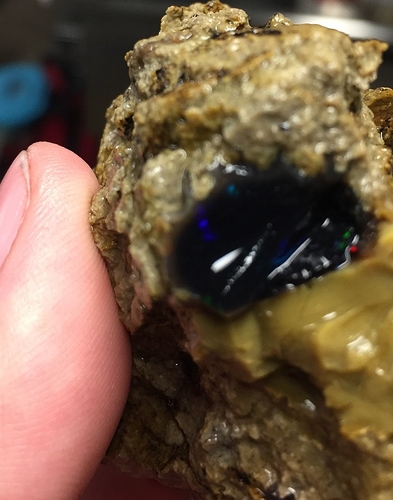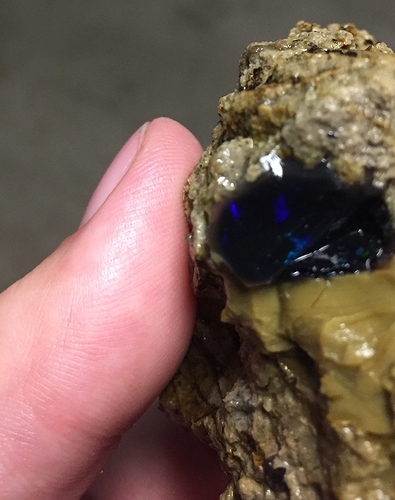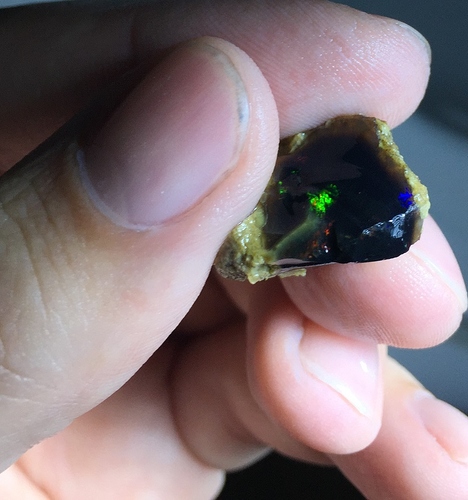Hello everyone!
This is my first posting as a new member of this community! I’ve found my way here through what has so far been a unfruitful search for information about American black opals… I have a need for your knowledge and suggestions.
In May I met up with an old rock hound friend of mine and he showed me a stunning wet specimen that is a piece of a limb cast he had mined from the Virgin valley, Nevada about 10 years ago. I caught opal fever right there when I laid eyes on such beauty. We started planning on making a trip out there together and were targeting this month, but things fell through and I had to go by myself or wait another year for the next season.
Well, I got back in town from my trip just the other day!!! It was an amazing adventure and I was fortunate, maybe very fortunate. That’s why I’m here, I have what I believe is some very, very nice black fire opal but I have had no success in gathering meaningful information from people in my area who have faceting and lapidary skills because the material is just so rare. None of the people are willing to suggest much because, well, they just don’t know enough. So I need all of your help, anyone, someone…please.
I really want to be able to give my girlfriend a piece of black opal jewelry some day, like a nice ring some day but I don’t know if what I found is only a wet specimen or something more…
I can’t find anything on the internet that is comparable as far as American black fire opal and therefore I have little to go on as far as gaining some kind of intuition into the value of what I have, or its potential application… The specimens I see on the internet have cracks, are much lighter in color (N4’s) or are a mere glaze of opal around a piece of wood…





